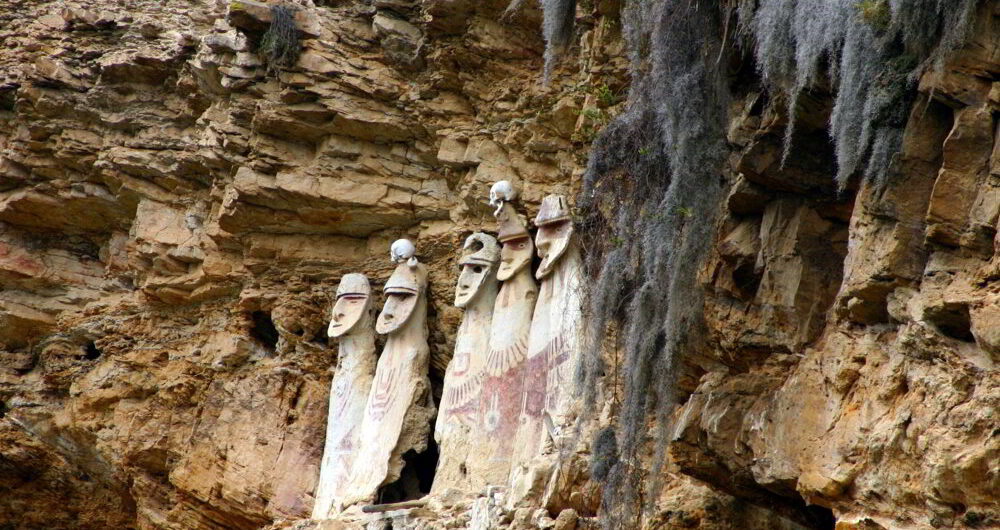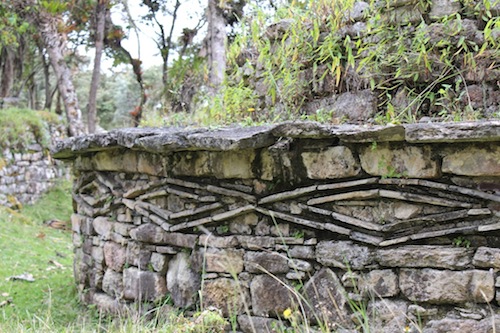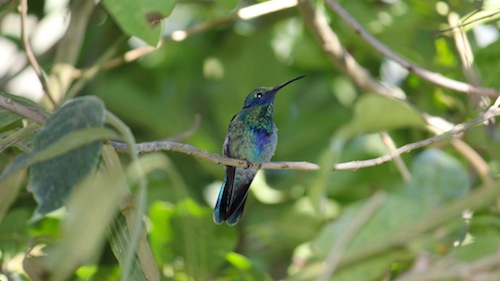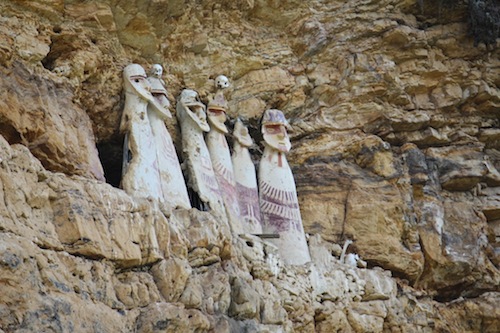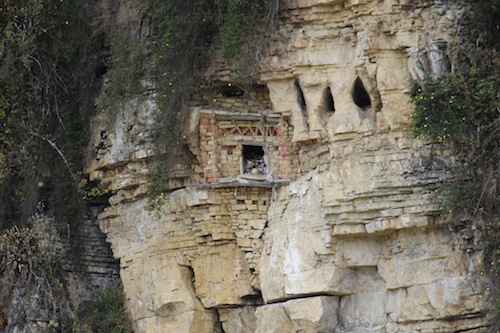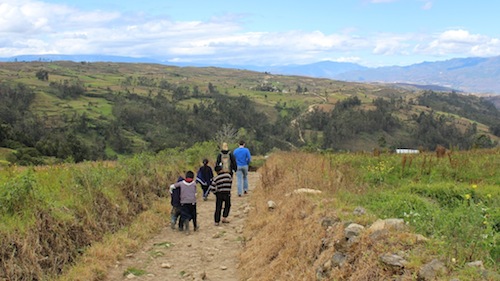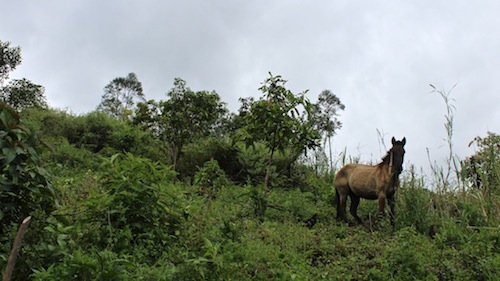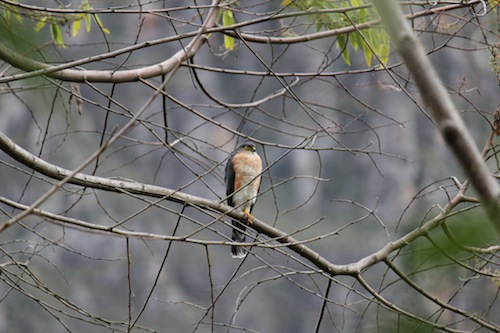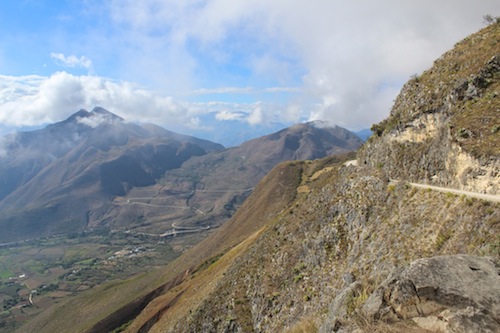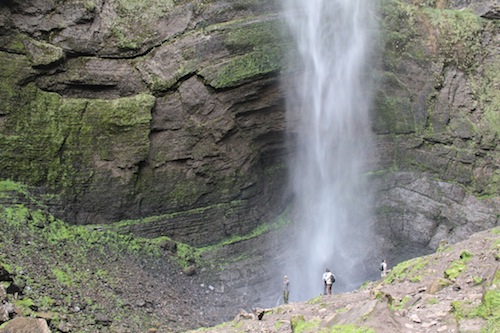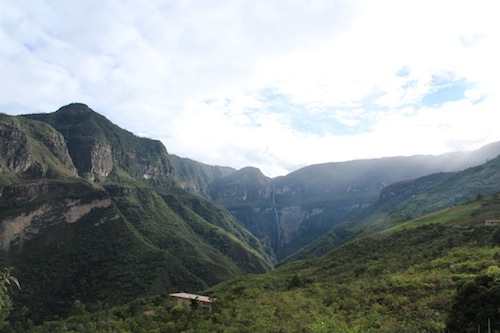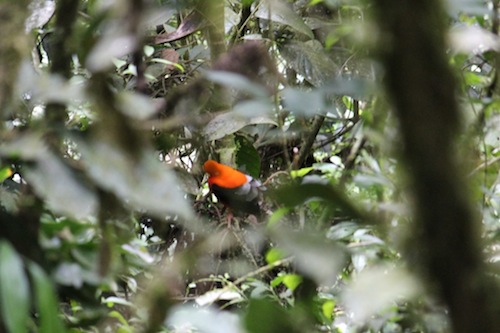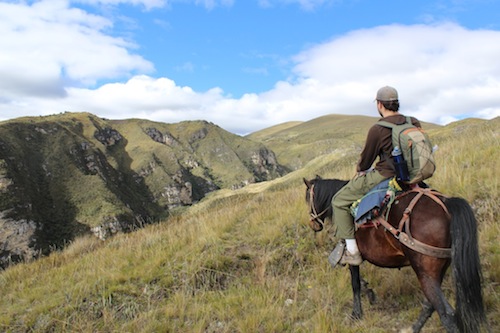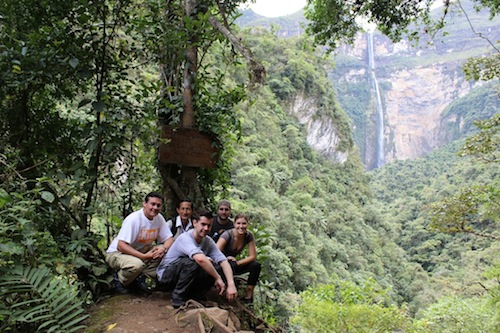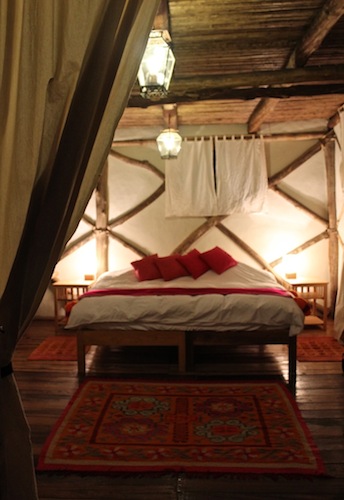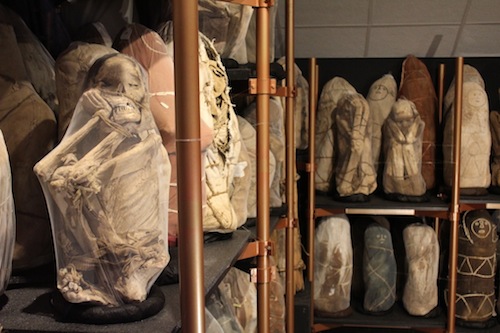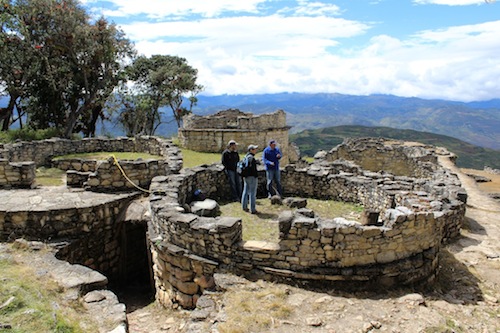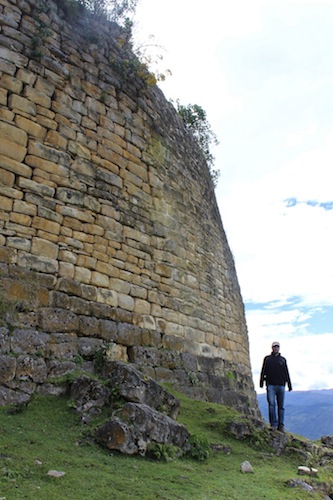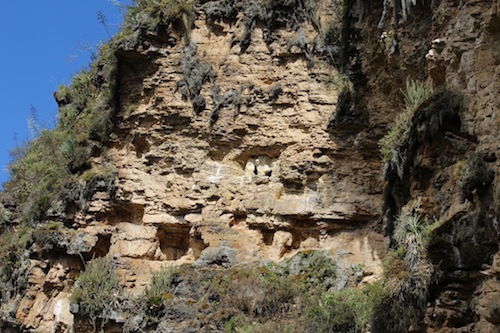A recent visit to the relatively unknown Chachapoyas region in northern Peru has opened up a whole new realm of travel for me. Offering a unique balance and interconnectedness of a largely unearthed history, enriching cultural experiences, and magical and diverse wildlife, this excursion was perhaps one of the most impressionable trips of my life. Chachapoyas archaeology and natural attractions in this region made this true Indiana Jones territory!
Chachapoyas Archaeology & Nature
At Aracari we’ve fondly dubbed the region Peru’s Best Kept Secret, as many people, both foreign and national, are either unaware of its existence or are steered away by its relative inaccessibility, making it free of the hustle and bustle associated with the more frequented locales such as Cusco and Machu Picchu. In many cases, visitors can find themselves exploring natural ancient wonders in blissful solitude.
Getting to Chachapoyas
The region is best suited to more seasoned travellers with roads, internet access and infrastructure more limited than areas with more tourism, like Cusco. There are no luxury hotels, but rather attractive and stylish locally-run lodges – our favourite is Gocta Natura Cabins. Read more on our top picks for the best hotels near the must-see site of Kuelap in Chachapoyas. A new flight route was launched in 2017 on LATAM connecting Lima with Jaen, for the first time offering easy air access. Previously long car journeys were required from Tarapoto or Cajamarca.
The hidden secrets of the cloud forest
Nestled discreetly in the dense covering of the trees, partially buried beneath your feet along the pathway, tucked away outside of a small village, and constructed high above in the face of death-defying cliffs, a trip to Chachapoyas yields an abundance of treasures. Success of our trip can without a doubt can be accredited to the careful planning, cautious driving, and exceptional guiding of Aracari’s local experts.
The highlights of Chachapoyas
Included in our own itinerary were visits to Gocta, one of the tallest waterfalls in the world, the sarcophagi of Karajia, the fortified city of Kuelap, and the well-pointed Leymebamba Museum, the more well-known sites in the area. Each of the sites were distinct and impressive in their own right, but what amplified the experience at each location were the little details.
Hiking Gocta Waterfall
Although not originally included in our itinerary, our group opted to trek to the Gocta waterfall, and during our approximate 6 hour journey, our guide took the time to give detailed explanations about the local plant and animal life, to point out Jurassic ammonites hidden along the path, and to demonstrate the inner workings of a traditional sugar cane press. Drawing closer to the falls, we were also rewarded with a rare midday spotting of the colorful yet elusive Cock of the Rock, an opportunity which would have been missed had we not had our guide’s sharp eyes. Although we visited during the dry season, the thin rush of water, which mostly turned to a chilling mist at the base, was an impressive sight to behold against the striated rock backdrop that comprises the face of the massive cliff. After a strenuous uphill hike and box lunch, we returned to town to board the van and transfer to the city of Chachapoyas, but not before our guide took the opportunity to ask a local elderly woman if we could watch her create an intricate and colorful table tapestry using a traditional backstrap loom, and she graciously obliged. The day was topped off when he popped his head in another doorway to ask if we could sample another local’s fresh chirimoya, a grapefruit-sized fruit with sweet, sherbet-like flesh.
Read our Chachapoyas itinerary Peru’s Best Kept Secret
Wildlife watching
At the small town outside of Karajia, we were faced with another taste of interaction with residents. Nearly the entire population of the town’s children joined us on our excursion, asking us our names and where we came from, pointing out flocks of colorful loro, or parrots, as they flew overhead, and even offering to be our guides, a very hard thing to pass up when offered by a six-year old with an adorable, toothy grin. They eagerly pointed out the well-preserved sarcophagi, some of which were camouflaged in the face of the rocks, and they anxiously awaited their turn to get a better view using our binoculars. While we sat and enjoyed a snack, the children told us about their favorite school subjects and played marbles, and when we journeyed back to the town walking up the steep and mangled road, they pulled us along by the hand and then held us back when they needed a breather. Although we were fully aware that some of these interactions were motivated by a deep yearning to be rewarded with chocolate, there remained an innocence and curiosity about the children that was refreshing, as opposed to some other, well-traveled areas where local adults and children alike seem overcome by the effects of mass tourism, characterized by the blatant commercialization.
The pre-incan ruins of Kuelap
The most well-known site of the trip was Kuelap, located at the end of a winding dirt road that scaled the side of the mountain. Perched atop a ridge overlooking the Utcubamba Valley, the fortified city of Kuelap and its monumental walls were enough to stop you in your tracks. Although we were not the only group there that morning, we enjoyed unobstructed views. This was largely due to the excellent planning and timing of our guide, as the site was relatively free of noise, and we had ample time to take photos before a small albeit boisterous crowd arrived just as we were departing. Heading off any potential issues, our guide took the time to speak with these unaccompanied visitors to reinforce the importance of being mindful of this priceless and historic archaeological site. Then, on the way to the town of Leymebamba, he asked if we would like to stop at a local restaurant to try some steaming hot, fresh corn soup, and we were not disappointed with the suggestion.
Leymembamba Museum
Located just a few minutes away from the Main Square of the town of Leymebamba and directly across the street from the hands-down best accommodation in the entire region, the Leymebamba Museum is well-designed both aesthetically and with a practicality that makes it easy to navigate. The museum is surrounded by beautiful gardens, and the artifacts within are accompanied by descriptions in multiple languages. The exhibits line the walls and occupy the floorspace in the middle in order to allow visitors to view some artifacts in the round, and in an effort to preserve these precious and ancient objects, the museum also boasts temperature controlled rooms. Perhaps the most impressive of the museum’s features were the exquisite collection of mummy bundles and quipus. The former was sourced from the the Laguna de los Condores site excavation and is housed behind glass in a separate examination room. The mysterious quipus, which served as an ancient counting system that has yet to be decoded, are in excellent condition and are proudly displayed in frames on the wall. A must-visit when making this journey, the Leymebamba Museum is an unexpected yet exemplary gem.
Kentitambo Lodge
During our time in Leymebamba, we had the opportunity to spend the night at the magnificent Kentitambo, which means “Hummingbird Inn” in the native Quechua language. Having heard from friends, colleagues, and Aracari guests that the property, service, staff, food, and accommodations were nothing short of superb, we went with very high expectations. From the moment we arrived to the front gate, the attention to detail impressed us. Clear indications of the lodging’s environmental ethos are the harvesting and recycling of rainwater as well as the sourcing of locally produced ingredients, some of which, such as the juicy suckling pig, originated from Kentitambo’s very own farm. The staff did their utmost to make us feel at home, preparing a delicious meal, placing hot water bottles under the covers of our beds, and even storing our luggage while we rode into the even more remote wilderness. Needless to say, we would graciously and vehemently echo the previous visitors’ remarks.
Hummingbirds
As the name would suggest, a highlight of the property are the hummingbirds. Scattered throughout the grounds are feeders and flowers, and wanting to try out my new zoom lense during my visit here, I posted up in between two bushes directly under a feeder to try to snap some photos. Not long after, the hummingbird wars began. Zooming in from all directions, the tiny winged creatures took turns diving towards the feeder for a quick slurp of sweet nectar, jerkingly hovering to size one another up and to exchange a few chattering squeaks of disapproval, and in a split second, disappearing back into the trees.
Tajopampa
Not wanting to leave the comfort of Kentitambo but anxious to explore deeper into the cloud forest, we climbed aboard horses and set off towards Tajopampa, where we would spend the night in a very rustic but perfectly located farmstead. Replicating the journey that Dr. Jago Cooper covered in the BBC Four series “Lost Kingdoms of South America,” Episode 1 “People of the Clouds,” we were escorted by a Leymebamba local Eyrien, who would be our guide during our trek to the death-defying cliff tombs of La Petaca and Diabo Huasi. Unlike Dr. Cooper, we were not able to repel into the tombs, but the bones of ancient Chachapoya were still visible using binoculars and a good zoom lense. During our excursion, we were pleasantly surprised to hear that Eyrien was one of the many residents who had been enlisted to help archaeologists with the excavation of Chachapoyan sites in the vicinity, an opportunity which enables locals to invest time and effort into understanding the rich history of their region, gives them a greater incentive to aid in preservation efforts, and in some cases provides them with alternative career paths. The most challenging yet rewarding part of the entire journey, this rugged, once-in-a-lifetime experience to the tombs is one that typically only archaeologists endure, and the frigid mountain air at night, the lack of plumbing, and the unruly terrain, only furthered emphasized the feeling like we were true explorers.
Although one would might expect that the journey would end when the transfer to the airport began, but this is certainly not the case. Waking up before dawn, we set out on a 6 hour drive on a terrifying and stomach-wrenching road (which thanks to the flights to Jaen from Lima that LATAM launched in 2017 is no longer necessary!). Our driver made our journey as comfortable as possible, making timed stops along the way to give us a break from the nauseating turns as well as slowing to a crawl and pre-emptively honking to warn other vehicles around sharp turns. He knew all of the best locations for photo ops of the strange and diverse landscapes along the way, and we were able to avoid serious delay due to major construction, perfectly timing our trip so that we avoided a timed roadblock that would have otherwise made us miss our flight.
Visit Chachapoyas with Aracari
Read our Peru’s Best Kept secret or read more about the highlights of a Chachapoyas tour. Contact us for more information and to plan a trip to Chachapoyas in Peru.

